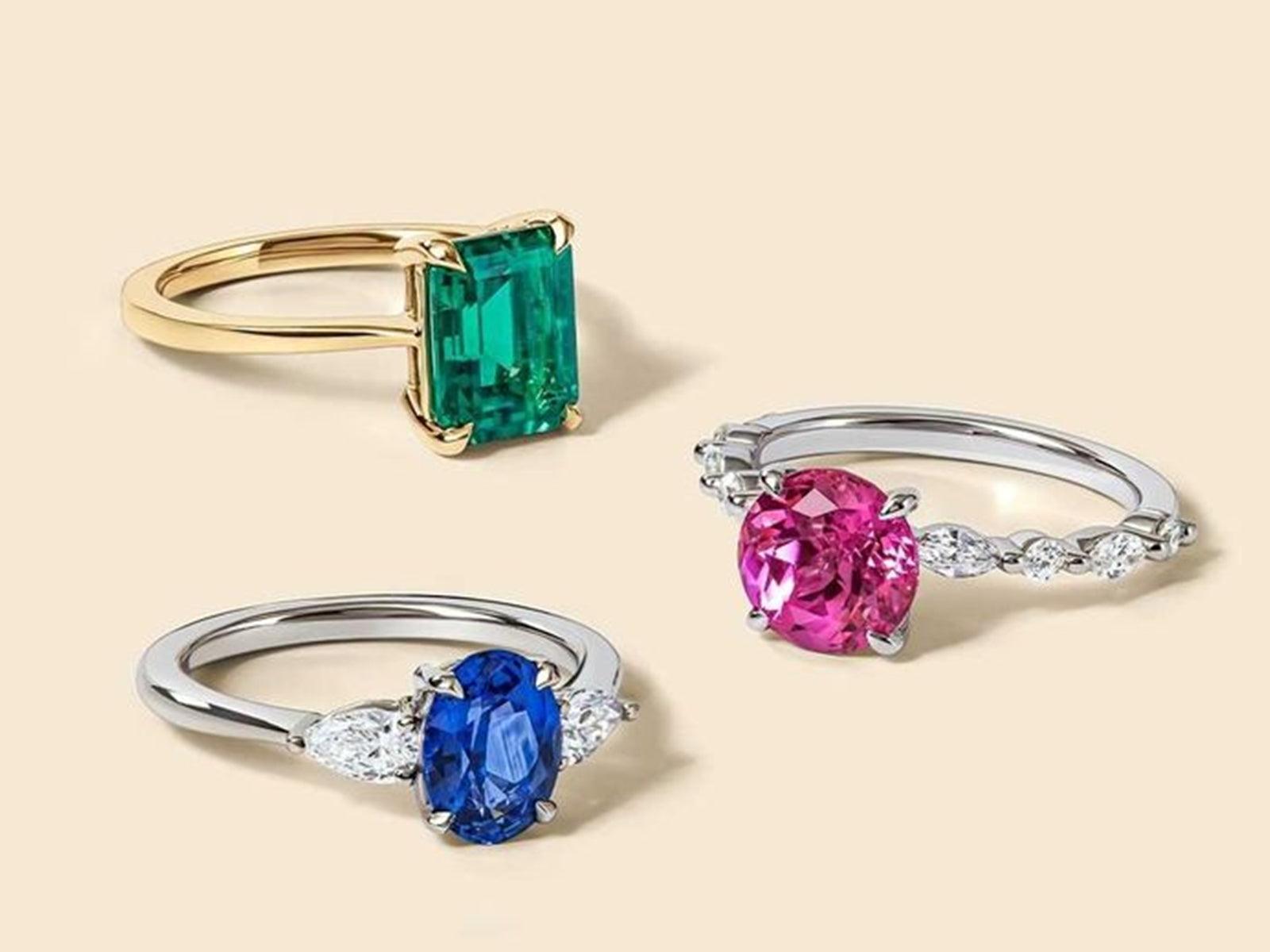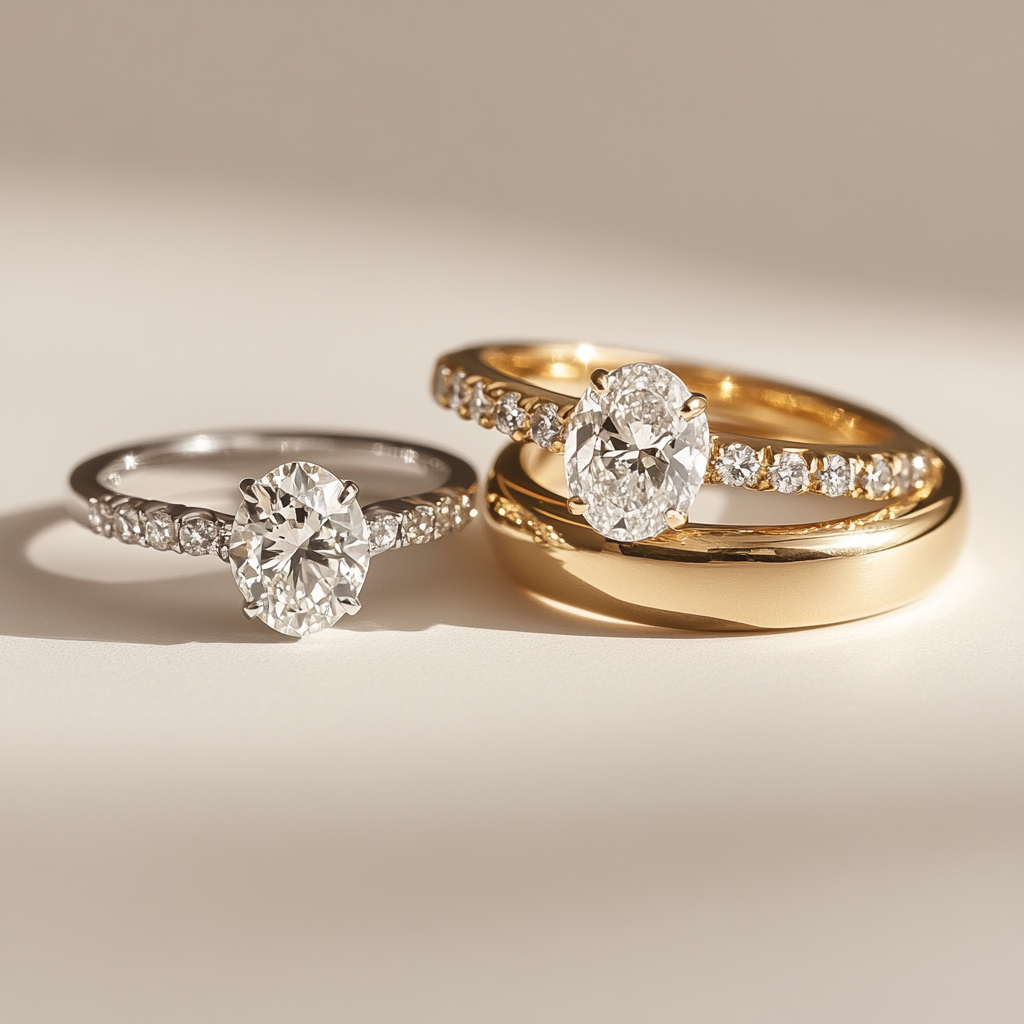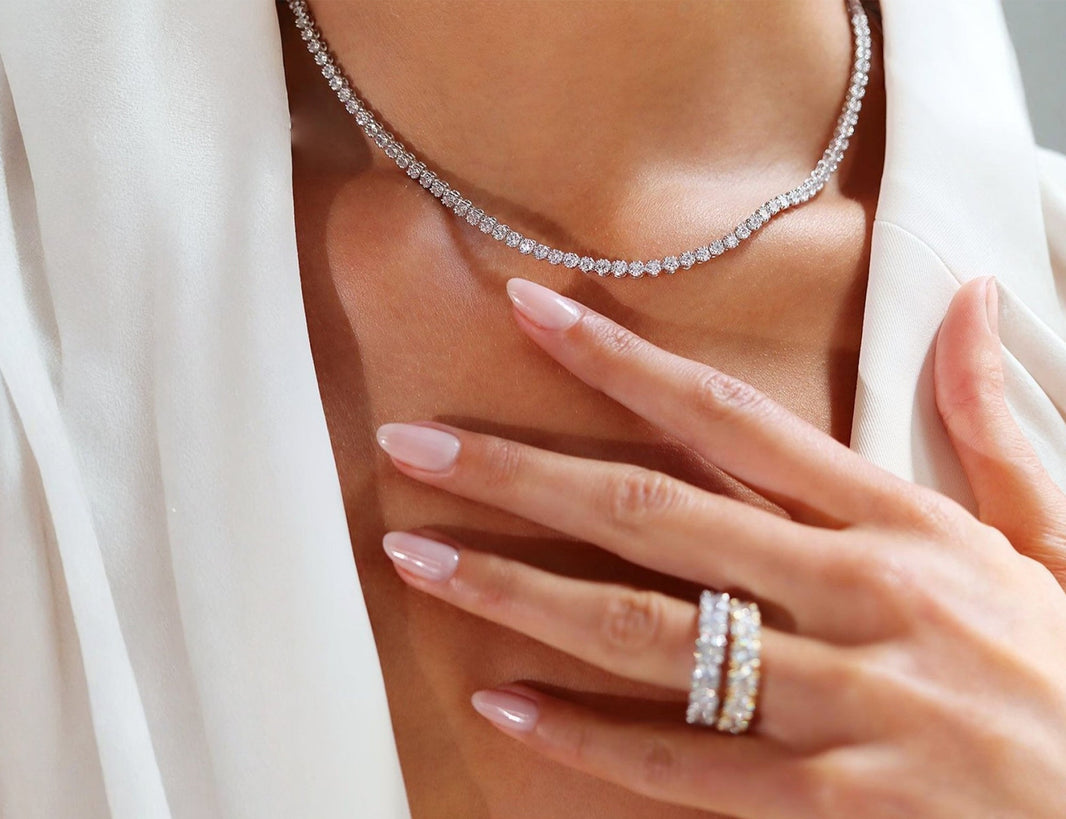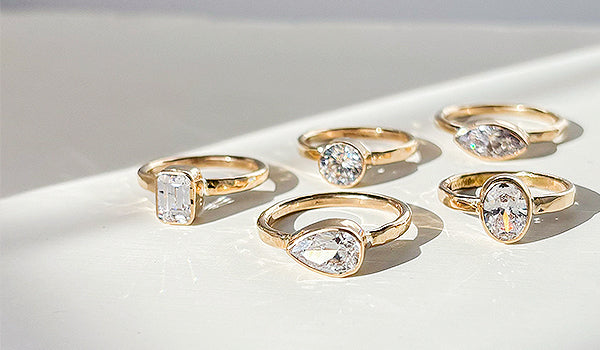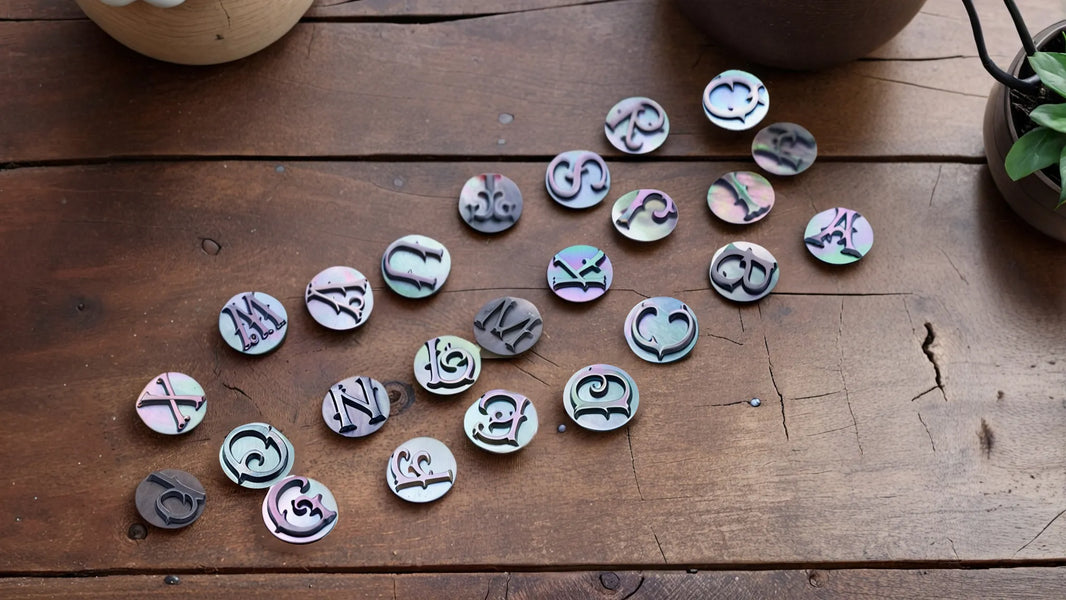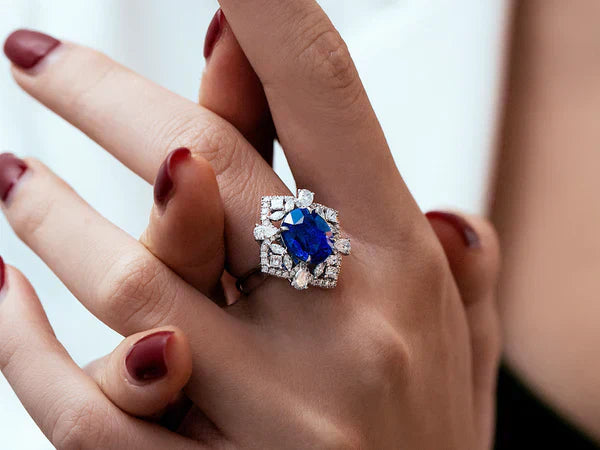Birthstone engagement rings offer a personal way to show your love using gems that have special meaning to you both. Many couples now choose lab grown gemstone engagement rings instead of diamonds to add color and uniqueness to their commitment. Lab grown sapphire engagement rings give you that beautiful blue sparkle, while a lab grown emerald engagement ring offers a stunning green that stands out. If red is your color, lab created ruby rings make a perfect choice for expressing passion.
The best part about lab created gemstone rings is that they look identical to mined stones but cost much less and are better for the planet. Lab grown gemstone jewelry comes in many styles, so you'll easily find something that fits your taste - whether you prefer classic, modern, or something in between. These colorful rings tell your love story in a way that's both beautiful and meaningful.
Why Should You Choose a Birthstone Engagement Ring?
Birthstone rings add personal meaning that diamonds can't match. These colorful gems connect to special dates in your relationship. Lab-grown birthstones are now affordable and ethically sourced.
- Birthstone Rings Tell Your Personal Storyc: A birthstone adds extra meaning to your proposal. Pick a stone that matches your partner's birth month, when you met, or another special date. It creates a story your partner can share whenever someone notices their unique ring.
- You'll Save Money Without Sacrificing Qualityc: Lab-grown gems cost much less than natural stones but look just as good. A lab sapphire costs about a third less than a mined one. This means you can get a bigger stone or fancier setting while keeping money for your wedding.
- Colored Gems Make Your Ring One-of-a-Kind: A colored gemstone stands out among typical diamond rings. The unique color reflects personality and breaks from tradition. Your partner won't have the same ring as everyone else.
- You Can Feel Good About Your Purchase: Lab-grown gems skip harmful mining, create less pollution, and avoid labor issues. Your symbol of love comes with peace of mind that mined gems often can't offer.
- You'll Find a Style That Fits Perfectly: Birthstones work well in any ring style—vintage, modern, or unique. Lab-grown gems come in all popular shapes, so you can match your partner's taste while using their meaningful birthstone.
- Your Birthstone Ring Celebrates Your Unique Love: A birthstone ring shows you've put thought into your choice instead of just following tradition. These gems offer beauty at better prices while matching modern values. That splash of color will remind your partner of your thoughtfulness every day.
Which Birthstone Should You Choose for Each Month?
Choosing a birthstone engagement ring makes your proposal date even more special. This month-to-month guide makes it easy to understand the options, toughness, and unique qualities of each birthstone, with useful tips on choosing lab-grown equivalents that bring beauty and cost savings.

January: Garnet - The Deep Red Classic
January's garnet produces a rich, wine-red hue that means deep commitment. It ranks 6.5-7.5 on the hardness scale of Mohs and has moderate durability for day-to-day jewelry. Man-made garnet rings typically show the common almandine variety, but rare green tsavorite garnets are stunning alternatives. Incorporate bezel settings to provide extra protection and rose gold metal for garnet's deep undertones.
February: Amethyst - Royal Purple Beauty
February's amethyst ranges from pale lavender to deep purple and pairs well with both white and yellow metals. At a 7 on the Mohs scale, lab-grown gemstone jewelry featuring amethyst is highly durable with proper care. Choose cushion or oval cuts to best showcase this gem's natural color play. Amethysts are relatively much cheaper than diamonds but provide excellent size options for show-stopping center stones.
March: Aquamarine - Peaceful Blue Refinement
Aquamarine in March fills the senses with peaceful blue the shade of unpolluted ocean waters. Their high 7.5-8 hardness guarantees these resilient stones stand up well in lab-produced gemstone wedding bands worn every day. Pale blue shines brightest in bigger aquamarines, where emerald or brilliant cuts are sought-after choices. Lab-produced aquamarines contain the highest clarity without natural stone inclusions.
April: Diamond - Brilliant Conventional wisdom
April's birthstone is the classic diamond. While classic natural diamonds are timeless, lab-created diamond alternatives exist at the same hardness (10) and appear at a fraction of the cost. Search for colorless options or fancy color lab diamonds in blue or pink for something special. Any setting style is terrific for this extremely durable stone.
May: Emerald - Elegant Green Sophistication
Emerald is May's symbol of new beginnings with its rich green shade. A lab-grown emerald engagement ring holds incredible benefits compared to natural emeralds with fewer inclusions and higher strength. Emeralds are 7.5-8 on the Mohs hardness scale and therefore need protective cases such as halos or bezels. The step cut makes the gem look richer, but lab growth renders emerald mining's ethical drawbacks obsolete.
June: Pearl, Alexandrite, or Moonstone - Versatile Choices
June has three birthstone options. Pearls (2.5-4.5) are too delicate for daily wear engagement rings. Opt instead for alexandrite (8.5), a color-shifting stone that appears blue-green in daylight and purple-red under incandescent light. Cultured alexandrite provides this rare effect at budget-friendly prices. Alternatively, moonstone (6-6.5) glows with a romantic blue sheen but requires protective settings.
July: Ruby - Passionate Red Statement
July's ruby represents passion with its vivid red color. Lab created ruby rings provide exceptional durability at 9 on the Mohs scale, second only to diamonds. The gemstones shine brilliant brilliance in oval and round shapes, whereas the vintage inspired halo settings enhance their fiery performance. Lab-grown rubies provide consistent color and clarity that is rare in natural rubies and are perfect engagement rings.
August: Peridot or Spinel - Fresh Green or Vibrant Versatility
August offers peridot (6.5-7) with its apple-green color or spinel, which comes in multiple colors including red, blue, and pink (8). Spinels' increased hardness makes them a more sensible option for day-to-day wear as wedding bands. Lab-grown spinel offers excellent clarity and color consistency from its rainbow of options, making it one of the most versatile lab-grown gemstone jewelry.
September: Sapphire - Regal Blue Classic
September's sapphire provides exceptional durability at 9 on the Mohs scale. Lab-grown sapphire engagement rings possess the same hardness and beauty as natural sapphires but with greater clarity and color uniformity. Blue is timeless, but sapphires come in nearly any other color except red. Princess cuts maximize color while oval cuts create maximum perceived size. Sapphires pair beautifully with diamond accents in vintage-style designs.
October: Opal or Tourmaline - Colorful Choices
Opal and tourmaline are the birthstones of October. Opals (5-6.5) are stunning color play, but too pale for day wear rings. Tourmaline (7-7.5) in pink, green, or rare watermelon cut with pink and green striations can be used as an alternative. Lab-created gemstone rings featuring tourmaline have acceptable hardness with shielded designs. Bezel-set tourmalines guarantee security along with style.
November: Topaz or Citrine - Warm Golden Glow
November's citrine (7) offers honey to amber tones, while topaz (8) ranges from colorless to blue, with "Imperial topaz" showing peachy-pink hues. Both make beautiful lab grown gemstone engagement rings, though topaz offers superior durability. Cushion cuts enhance citrine's warm glow, while emerald cuts highlight topaz's clarity. These stones pair especially well with rose gold for a romantic, sunset-inspired combination.
December: Tanzanite, Turquoise or Zircon - Cool Blue Options
December offers three choices, but tanzanite (6-7) and turquoise (5-6) lack ideal durability for everyday rings. Blue zircon (7.5) makes a better choice with its brilliant sparkle and ice-blue color. (Note: natural zircon differs from cubic zirconia.) Lab created zircon alternatives offer excellent clarity and consistent color. Consider protective settings like halos to safeguard these stones from impact.
Any birthstone can be meaningful regardless of birth month. Choose the stone that resonates with your relationship's special dates or simply the color that brings your partner joy. Lab grown gemstone jewelry offers beauty, durability and ethical advantages across all these wonderful options.
9 Ways to Incorporate Birthstones Beyond the Center Stone
While a birthstone center gem makes a bold statement, there are many subtle and creative ways to include these meaningful stones in your engagement ring. These approaches allow you to honor special dates while maintaining a traditional look or creating something truly unique.

1. Add Birthstones as Accent Stones
Flank your main diamond or gemstone with smaller birthstones on either side. Three-stone rings traditionally symbolize past, present, and future—perfect for incorporating birthstones that represent significant relationship milestones. For example, pair a center diamond with sapphires representing the month you met or emeralds for the month you plan to marry.
2. Create a Colorful Birthstone Halo
Surround your center stone with a halo of small birthstones instead of traditional diamonds. This works beautifully with contrasting colors—imagine a diamond encircled by rubies or a sapphire surrounded by small peridots. Lab grown gemstones make this option more affordable while ensuring consistent color and quality throughout the halo.
3. Design a Birthstone Pavé Band
Incorporate tiny birthstones into the band itself using pavé setting techniques. This creates a subtle shimmer of color that complements rather than competes with your center stone. Alternating patterns—like your birthstone with your partner's—add personal significance that only you two fully understand.
4. Hide Birthstones as Surprise Elements
Place birthstones in the gallery rail (the area beneath the center stone) or as small gems inside the band that only the wearer knows about. These "secret" birthstones add meaning without altering the ring's appearance from above. Some designers create small openings in the setting where these hidden gems catch light in unexpected ways.
5. Use Birthstones in Channel Settings
Channel-set birthstones along the shoulders of the ring offer a structured way to incorporate color. This technique secures the stones between two parallel metal walls, protecting the gems while creating a sleek, modern look. It works particularly well with square-cut birthstones like princess-cut sapphires or emeralds.
6. Consider Gradient Birthstone Arrangements
Create an ombré effect using graduating shades of one birthstone or a beautiful transition between two different birthstones. For instance, light to dark blue sapphires, or a blend from blue sapphire to green emerald. Lab created gemstone rings make this option more accessible as the consistent color quality ensures a perfect gradient.
7. Include Birthstones in Vintage-Inspired Filigree
Incorporate small birthstones into ornate metalwork details. Vintage-inspired settings often feature delicate filigree or milgrain work where tiny birthstones can nestle within scrolls or floral motifs. This approach honors tradition while adding personal significance through your chosen birthstones.
8. Design Custom Stackable Rings with Different Birthstones
Rather than incorporating multiple birthstones into one ring, consider creating stackable bands—each featuring a different birthstone. This allows you to collect meaningful rings over time to commemorate anniversaries, children's births, or other milestones. Your engagement ring becomes just one element in an evolving story told through gemstones.
9. Mix Birthstones with Diamond Accents
For a balanced approach, alternate birthstones with small diamonds around a band or in a halo. This maintains some traditional bridal elements while introducing personalized color. The diamonds help unify the design and add extra sparkle that complements your chosen birthstones.
Incorporating birthstones beyond the center stone allows you to personalize your engagement ring in subtle yet meaningful ways. Whether you choose lab grown gemstone accents or natural stones, these creative approaches let you honor important dates and add significance to your ring without compromising on style or tradition.
Birthstone Durability: Which Gems Stand Up to Daily Life?
Engagement rings face daily challenges from handwashing to accidental bumps. Understanding gemstone durability ensures your ring remains beautiful for decades.
The Mohs Scale Measures Scratch Resistance
Gemstones are rated on the Mohs hardness scale of 1-10, with 10 being the most durable. Lab-created sapphire engagement rings are 9, making them excellent for daily wear. Lab-grown ruby rings are equally durable at 9. Lab-grown emerald engagement rings are 7.5-8, so they require a little more caution but can still be worn daily.

Not All Birthstones Are Durable Enough for Daily Wear
While lab-created gemstone rings are equal to their natural counterparts in durability, certain birthstones simply aren't hard enough for engagement rings. Opals (5-6.5), pearls (2.5-4.5), and tanzanite (6-7) can chip easily and are better worn occasionally. If these hold true significance for you, consider protective settings or save them for special occasions.
Setting Design Affects Durability
Protective settings can help extend the life of lab-created gemstone jewelry significantly. Bezel settings envelop the stone's edge entirely, and cathedral settings raise and protect the gem. These provide much better protection than prong settings that expose more of the stone to impact.
Lab-Created Gems Match Natural Durability
Lab-grown gemstone engagement rings share the same hardness as their natural counterparts. A lab-grown sapphire is scratch-resistant just as a mined one would be. The physical characteristics and crystal composition are identical, so your lab-grown gemstone rings will withstand daily wear and tear just like their natural counterparts.
Simple Care Habits Protect Your Investment
Remove your ring during rough activities like gardening or sports. Clean with mild soap and warm water monthly. Have settings checked annually by a jeweler to ensure stones remain secure. These simple habits will keep your lab-grown gemstone jewelry looking beautiful for generations. Sustainable jewelry like these lab-grown gems requires proper care to maintain their brilliance and ethical value over time.
Design Your Dream Birthstone Ring with Lab Grown Gems Today
Birthstone engagement rings made with lab-grown gems give you the perfect mix of personal meaning and beauty without breaking the bank. These stones tell your love story through colors that matter to you both. Lab-grown gems are just as strong as natural ones but typically look clearer and cost less. Whether you choose a sapphire that matches your anniversary month or add tiny birthstones that represent special dates, your ring will be uniquely yours. Selecting the correct ring size is just as important as choosing the perfect gemstone, as it affects both comfort and the long-term security of your precious birthstone. Talk to a jeweler who knows lab-grown gems well and make sure to pick stones that can handle everyday wear. The right birthstone ring isn't just gorgeous—it's a meaningful symbol you'll love wearing for years to come.
FAQs about Birthstone Engagement Ring
Q1: Can a birthstone be used in any engagement ring?
Not all birthstones are suited for daily wear. Diamonds (April), sapphires (September), and rubies (July) are excellent choices with 9-10 Mohs hardness. Emeralds (May), aquamarines (March), and topaz (November) are good choices at 7.5-8. Avoid using pearls (June), opals (October), and turquoise (December) for engagement rings because their 2.5-6.5 hardness will make them scratch and damage easily. If you love a softer stone, set it in a protected setting or use it as an accent stone instead.
Q2: Can I choose a birthstone that isn't mine or my partner's month?
No problem! While birthmonths are traditional, many couples choose stones that represent their first date, proposal date, or planned wedding month. Others simply choose a gemstone because they like the color, meaning, or aesthetics. There are no rules—the most important detail is choosing a stone that is meaningful to your relationship. Some even choose birthstones of children, parents, or other significant family relationships.
Q3: How do I care for a birthstone engagement ring, especially softer stones?
Remove your ring before swimming, cleaning, gardening, or exercising. For stones that are softer than 7 on the Mohs scale, clean with mild soap and warm water using a soft toothbrush. Harder stones can handle ultrasonic cleaners, but emeralds and stones with inclusions cannot. Store your ring separately to prevent scratching. Have rings with stones of less than 8 hardness checked twice yearly by a professional to maintain tight settings. Some gems like emeralds benefit from having special oils reapplied on a regular basis by a jeweler.
Q4: Are birthstone engagement rings cheaper than diamond rings?
Most birthstones, especially lab-created ones, are far less costly than diamonds of the same weight. A one-carat lab-created sapphire, for example, is generally 80-90% less costly than a comparable diamond. Even rubies and sapphires, precious birthstones, generally cost 30-70% less than diamonds. More affordable semi-precious stones like amethyst (February) or citrine (November) can be 90-95% less costly. This generally allows for a larger center stone or a more elaborate setting within a specified budget.
Q5: Can I combine multiple birthstones in one ring?
Yes, but consider color harmony and variations in durability. Choose stones of the same hardness to prevent unequal wear. Side-by-side settings suit contrasting birthstones, and gradient settings suit stones of the same color family. Three-stone settings can be utilized to represent two birthstones on either side of a center diamond. Ensure your jeweler is knowledgeable about the properties of each stone because some require special setting techniques.
Q6: What are the most durable birthstones for engagement rings?
Diamond (April, 10 Mohs), ruby (July, 9), and sapphire (September, 9) are the most durable birthstones, suitable for any lifestyle. Alexandrite (June alternative, 8.5) and topaz (November, 8) offer very good durability with minimal precautions. Emerald (May), aquamarine (March), and morganite (October alternative) at 7.5-8 need protective settings but wear well daily. For active lifestyles or manual occupations, restrict your selection to stones with a rating of 8 or higher.


